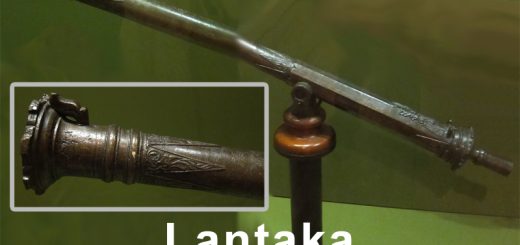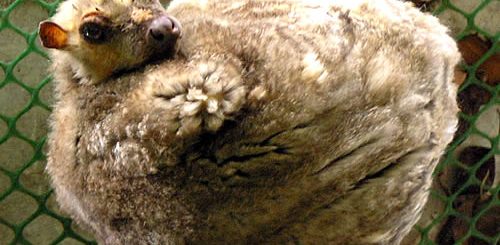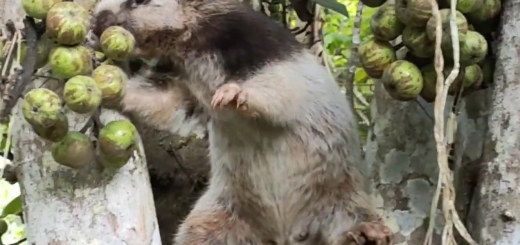The Philippine Pied Fantail – A Graceful Jewel of the Archipelago

The Philippine Pied Fantail (Rhipidura albicollis) is a charming, agile bird endemic to the Philippines, gracing the archipelago’s lush forests with its distinctive beauty and lively behavior. With its striking black and white plumage, melodious calls, and energetic antics, this bird has captured the fascination of birdwatchers and nature lovers alike. In this blog post, we’ll explore the life and ecology of the Philippine Pied Fantail, its unique traits, and why it’s a must-see for bird enthusiasts in the Philippines.
Other names by which this bird is referred to are Maria Capra and tarerekoy.
A Glimpse of the Philippine Pied Fantail
The Maria Capra is a small, agile bird that typically measures around 20 cm in length. It is easily recognizable by its black-and-white coloration: a black head, throat, and upperparts, contrasted with its white belly, underparts, and tail tips. One of its most notable features is its fan-shaped tail, which it constantly flicks and opens in a distinctive, waving motion, lending it the name “fantail.” This tail, combined with its swift, acrobatic flight patterns, adds to the bird’s grace and beauty.
While the plumage of the male and female are quite similar, some subtle differences in size and behavior may be observed between the sexes. The tail of the male, however, is often slightly larger, more pronounced, and more colorful than that of the female.
Habitat and Distribution
As an endemic species, the Philippine Pied Fantail is found nowhere else in the world except the Philippines. It thrives in the country’s tropical and subtropical forests, ranging from lowland areas to montane regions. The bird’s range spans many islands in the Philippines, including Luzon, Mindoro, Leyte, Samar, and parts of Mindanao.
The Philippine Pied Fantail is usually found in forested areas, including montane, lowland, and secondary forests, often in proximity to water sources like streams and rivers. It also inhabits forest edges, gardens, and occasionally even disturbed or urbanized areas, provided there is enough tree cover. Despite its adaptability, the species is sensitive to large-scale deforestation, which can threaten its habitat.
Philippine Pied Fantail Behavior and Diet
One of the most fascinating aspects of the Philippine Pied Fantail is its dynamic behavior. Known for its constant movement and rapid, fluttering flight, it can be seen darting through the trees, catching insects mid-air, or hovering around branches. Its tail, which it often flicks open and closed, is a distinctive feature that adds to its whimsical charm. These tail movements are thought to help the bird with communication, courtship, and foraging.
The Philippine Pied Fantail is an insectivore, feeding primarily on small insects like ants, flies, beetles, and other arthropods. Its acrobatic flight allows it to dart through foliage and chase after flying insects with impressive precision. Sometimes, the bird will even hover for short periods, much like a hummingbird, to catch insects that fly by.
The bird is often seen in pairs or small groups, although it is also known to be solitary during certain times of the year, especially when breeding.
Breeding and Nesting
It is a monogamous bird, with pairs forming strong bonds, particularly during the breeding season. The female typically constructs a small, cup-shaped nest made from twigs, leaves, and plant fibers. Nests are commonly built in trees or shrubs, often situated in areas that provide some shelter and concealment. The female lays a clutch of 2-3 eggs, which she incubates for about 12-14 days. During this time, the male assists by guarding the nest and feeding the female.
Once the eggs hatch, both parents work together to feed and care for the chicks until they fledge, which usually occurs around 14-18 days after hatching. The parents continue to support their fledglings for a short period after they leave the nest, helping them adjust to their environment.
Conservation Status
Currently classified as Least Concern by the International Union for Conservation of Nature (IUCN), which means it is not immediately threatened by extinction. However, like many other endemic species in the Philippines, it faces some risks from habitat loss, deforestation, and environmental degradation. Conservation efforts to preserve the Philippines’ rich biodiversity, especially its forests, will play a key role in ensuring the long-term survival of this enchanting bird.
Local and national conservation programs, as well as ecotourism initiatives, are vital for raising awareness about the importance of preserving the Philippine Pied Fantail’s habitat. Additionally, the growing interest in birdwatching in the Philippines has brought attention to the need for habitat conservation and sustainable practices.
A Birdwatcher’s Delight
For birdwatchers visiting the Philippines, the Tarerekoy is a rewarding species to observe. Its active, playful behavior and striking appearance make it a highlight for any birding expedition. Birdwatching spots in the Philippines, such as Mount Apo, Mount Pulag, and the Dumaguete Forests, are excellent locations to encounter the Philippine Pied Fantail in its natural habitat.
If you’re lucky enough to spot this beautiful bird, take a moment to appreciate its graceful movements and delicate calls, which echo through the forests of the Philippines. The Philippine Pied Fantail is not just a bird to observe; it’s a symbol of the country’s rich biodiversity and the vital ecosystems that sustain it.
Maria Capra Bird
Maria Capra is a true gem of the Philippine archipelago, known for its graceful tail and energetic antics. As an endemic species, it adds to the uniqueness and richness of the Philippines’ avian life. Whether you’re a seasoned birder or a casual nature lover, encountering this delightful bird is a must when exploring the natural beauty of the Philippines.
By supporting conservation efforts and raising awareness about the importance of preserving the country’s forests, we can help ensure that future generations will continue to enjoy the sight of the Philippine Pied Fantail in the wild.
Did you spot a Philippine Pied Fantail during your trip? Share your experiences and birdwatching tips in the comments below!
References:
https://en.wikipedia.org/wiki/Philippine_pied_fantail










